Forums
- Forums
- Duggy's Reference Hangar
- USAAF / USN Library
- Douglas F4D Skyray
Douglas F4D Skyray
Post a reply
- Go to Previous topic
- Go to Next topic
- Go to Welcome
- Go to Introduce Yourself
- Go to General Discussion
- Go to Screenshots, Images and Videos
- Go to Off topic
- Go to Works in Progress
- Go to Skinning Tips / Tutorials
- Go to Skin Requests
- Go to IJAAF Library
- Go to Luftwaffe Library
- Go to RAF Library
- Go to USAAF / USN Library
- Go to Misc Library
- Go to The Ops Room
- Go to Made in Germany
- Go to Campaigns and Missions
- Go to Works in Progress
- Go to Juri's Air-Raid Shelter
- Go to Campaigns and Missions
- Go to Works in Progress
- Go to Skinpacks
- Go to External Projects Discussion
- Go to Books & Resources
-
12 years agoSun May 22 2022, 01:36pmDuggy
 Main AdminText By Greg Goebel.
Main AdminText By Greg Goebel.
[1] ORIGINS / XF4D-1
* After the surrender of Germany in May 1945, two Douglas company aerodynamicists, Gene Root and A.M.O. "Amo" Smith, went to Paris to assess aerodynamic data captured from the Germans. The two obtained quite a haul of material, including wind-tunnel test data performed on models of tailless aircraft designed by Dr. Alexander Lippisch. Lippisch had actually developed a production tailless combat aircraft, the Messerschmitt Me-163 rocket fighter, and had many other ideas for tailless aircraft, particularly with delta wings. Root and Smith also had an opportunity to chat with Dr. Lippisch, who was then in Allied custody in Paris.
The Douglas company found the tailless delta configuration very interesting. Early jet engines had poor fuel economy and limited range, and the delta not only promised aerodynamic efficiency to make the most out of the available engine power, it also provided plenty of volume to accommodate internal fuel tanks. Wind tunnel tests on models initiated in 1946 gave excellent results, encouraging Douglas engineers to think they were on the right track.
Although the tailless delta was seen as potentially useful for a number of aircraft configurations -- including bombers, fighters, and transports -- studies focused in particular on a delta-winged interceptor. In January 1947, the US Navy issued a request for a short-range carrier-based interceptor. Douglas took the tailless delta interceptor concepts off the back burner and assigned the design the company designation of "D-571". The project was under the overall direction of Douglas chief engineer Ed Heinemann at the company's plant in El Segundo, California.
The initial D-571 configuration, drawn up by R.G. Smith, was a straight delta flying wing, with a tailfin but no distinct fuselage, very much along the lines of some of the advanced unbuilt wartime German jet fighter designs. The design gradually evolved to the "D-571-4", featuring a smaller rounded-off delta wing -- with a shape somewhat reminiscent of a valentine heart -- and a distinct forward fuselage.
The Navy liked the Douglas proposal, and awarded the company a contract for two prototypes on 16 December 1949. The prototypes were assigned the service designation of "XF4D-1." The aircraft's resemblance to a rayfish led Douglas to give it the name of "Skyray". Construction of the prototypes was performed in secrecy, and all information released to the public on the project was heavily filtered.
The first prototype made its initial flight on 21 January 1951 from Muroc (later Edwards) Air Force Base, with test pilot Larry Peyton at the controls. The flight was exciting, in a bad sort of way: Peyton found the aircraft inclined to pitch up dangerously, partly because of the way its flight controls had been configured, and found handling the machine generally troublesome. He did manage to get it off the runway, after an up-and-down bob that made those watching think the machine was going to pitch over and crash, and got it back down again after running it through its paces.
Peyton, who was more accustomed to test-flying large aircraft like heavy transports, did not want to and never did fly the Skyray again. Test pilot Russ Thaw took his place. The problems that had afflicted the initial flight were quickly corrected, with Thaw performing taxi tests to validate the fixes; the second flight of the aircraft was nowhere near as menacing as the first.
Thaw was later joined by Bob Rahn. Rahn had watches Thaw's test flights and had misgivings about flying the aircraft. Once he got into it, he found the stick forces were very heavy and handling at high speeds was rough. His initial efforts at spin tests were downright terrifying: the Skyray could (usually) recover from a spin, but the book had to be rewritten to tell pilots how to do it. Despite all that, Rahn called the machine a "fighter pilot's dream", the best machine he had taken into the sky since flying the Spitfire. Its instability made it supremely agile for a skilled pilot, and Rahn claimed that he out-flew every Air Force chase plane sent up with him. Marine Major Marion Carl, one of the top test pilots of the era, flew the Skyray and claimed: "If we had this airplane now in Korea, I could just pop off the MiGs -- one, two, three."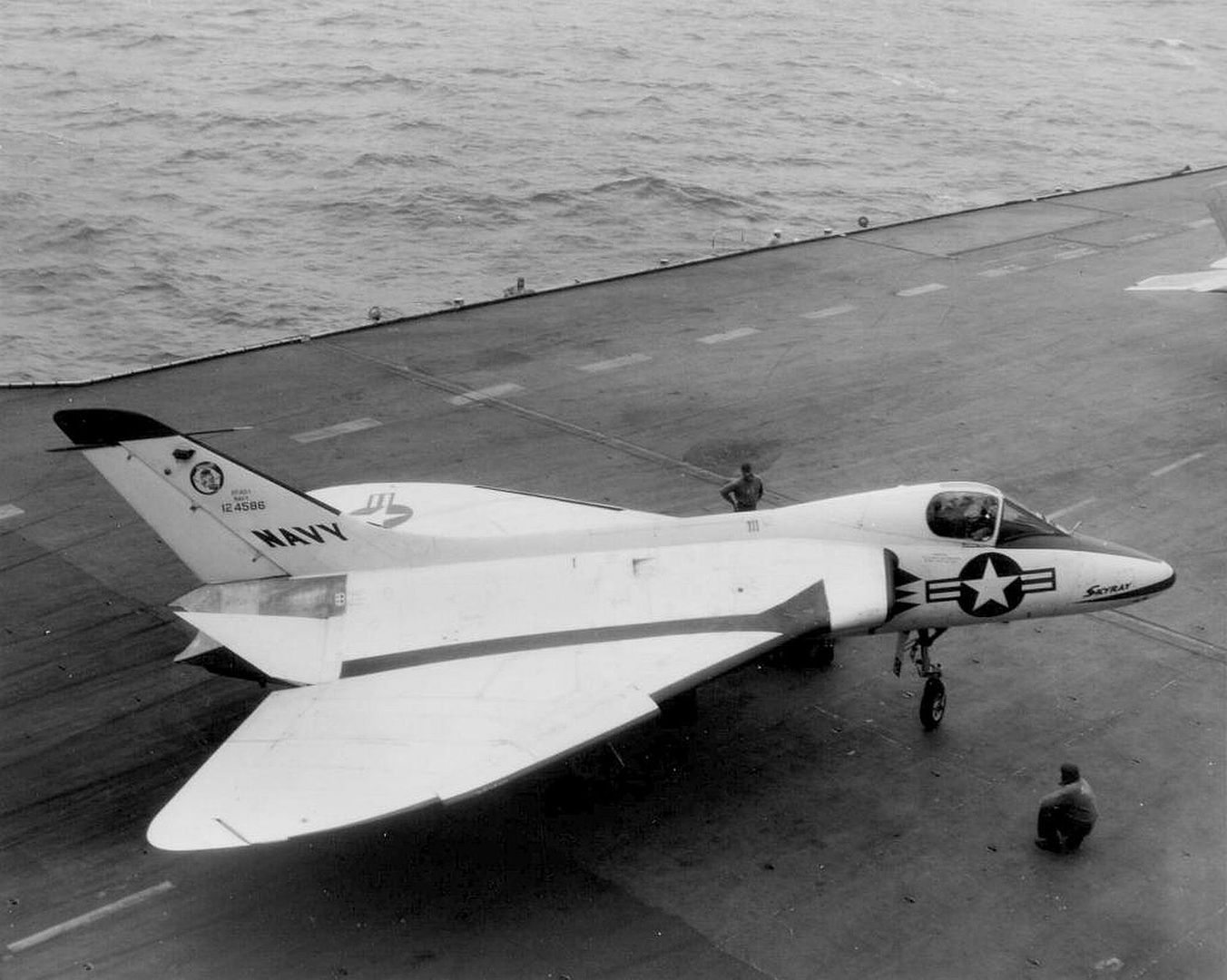
Although the prototypes initially featured a blunt nose, they were quickly fitted with a nose pitot tube for test purposes. Both machines were initially painted midnight blue, but they proved hard to spot and so were repainted in an overall white scheme. Non-availability of the Westinghouse J40 engine meant that both were initially fitted with an Allison J35-A-17 turbojet with 22.3 kN (2,270 kgp / 5,000 lbf) thrust, leaving them badly underpowered. The prototypes were later refitted with the Westinghouse XJ40-WE-6 non-afterburning turbojet engine with 31.1 kN (3,175 kgp / 7,000 lbf) thrust. It wasn't that much of an improvement, particularly since Muroc was at relatively high altitude and the engines performed substantially under their ratings; the Skyray prototypes were generally outpaced by F-86E chase planes.
The prototypes were then refitted with the XJ40-WE-8 afterburning turbojet with 51.6 kN (5,260 kgp / 11,600 lbf) afterburning thrust. Powered by the XJ40-WE-8, the Skyray achieved a world speed record of 1,213 KPH (753.4 MPH) over a 3 kilometer (1.86 mile) straight course on 3 October 1953, with US Navy Lieutenant Commander James B. Verdin at the controls. On 15 October, Bob Rahn took the Skyray on a 100 kilometer (62.1 mile) closed course, setting a new speed record of 1,172.3 KPH (728.11 MPH). Attempts to set an altitude record failed due to the erratic operation of the XJ40 engine, a sign of things to come.
Rahn's 100 kilometer record stood for five years, but that was mainly because nobody wanted to try it again for a time: the Federation Avionique Internationale's rules specified that the 100 kilometer run be conducted at low altitude, which became increasingly unsafe as aircraft grew faster. Although the Skyray was leading-edge in 1953, aircraft design was evolving so quickly that within a few years it would be outclassed in terms of raw performance.
The J40 engine's development continued to be troubled, and in fact it would more or less drive Westinghouse out of the jet engine business. In March 1953 the decision was made to put the Skyray into production using the Pratt & Whitney J57-P-2 afterburning turbojet engine with 64.5 kN (6,580 kgp / 14,500 lbf) afterburning thrust. The change was not very troublesome: Heinemann, realizing that designing a fighter around an engine that was still in development was risky, had made sure from the outset that the Skyray could also accommodate the J57 if push came to shove.
As far as the prototypes went, the first ended up as a firefighter's training rig and was ultimately trashed. The second, after a career as an engine testbed (discussed below) was, at last notice, on display at the Navy installation at China Lake, California.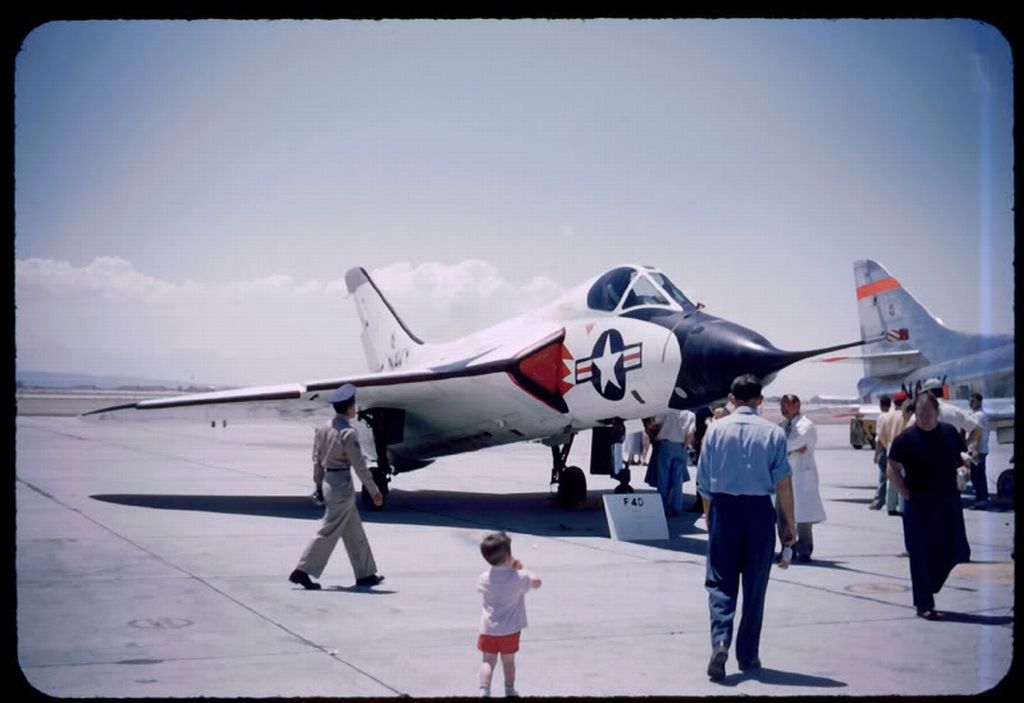
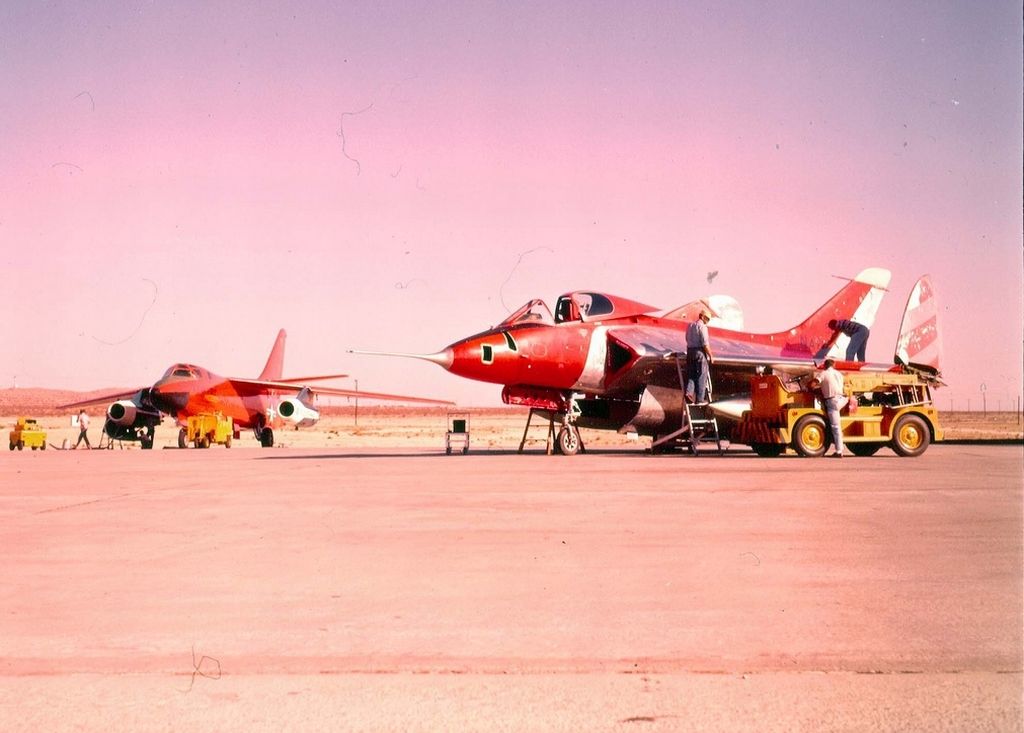
[2] SKYRAY DESCRIBED
* The first production F4D-1 Skyray made its initial flight on 5 June 1954. Along with the J57 engine, the production aircraft featured numerous small changes and was fitted with the Aero-13 fire-control system, featuring Westinghouse AN/APQ-50 radar. Due to delays in delivery of the radar system, initial production Skyrays weren't originally fitted with the radar, and apparently a handful were never refitted with it. The radar was impressive for its time, with a normal detection range of 29 kilometers (18 miles), and a lock-on range of 20 kilometers (12 miles). It was a major step forward in featuring an integrated design, with the entire unit sliding out for service; earlier radars had consisted of various boxes wired together.
Operational deliveries to the US Navy and Marine Corps did not actually begin until April 1956. That was an unusually long development cycle for those days, with the delays attributable to the problems with engine development. In fact, 38 Skyray airframes were completed without engines and parked so that they could be fitted with either the J40 or J57 engine when the issue was resolved.
The F4D-1 was arguably an attractive aircraft; it was unarguably distinctive, different in appearance from any other jet fighter ever put into operational service. It was of modified tailless delta configuration, with rounded-off wings and a tailfin, but no tailplane. The wing folded up outboard and featured inboard and outboard leading-edge slats, plus inboard and outboard elevons. There was a hydraulically-actuated airbrake on the rear of the wingroot, top and bottom on both sides, for a total of four airbrakes. There was also a guillotine-blade-shaped "pitch trimmer" control surface on each side of the engine exhaust. The tailfin was fitted with a two-section rudder.
Although early production Skyrays were fitted with the J57-P-2 engine, later production featured the uprated J57-P-8B engine with 45.4 kN (4,625 kgp / 10,200 pounds) dry thrust and 71.8 kN (7,255 kgp / 16,000 lbf) afterburning thrust. The engine inlets were of fixed triangular configuration, with a set of rods inside to ensure uniform airflow across the front of the J57 engine. There were "splitter plates" next to the fuselage in front of the inlets to ensure that stagnant "boundary layer" air wasn't sucked into the engine, robbing it of power or leading to an engine stall. The splitter plates were not fitted to the prototypes.
The F4D-1 featured tricycle landing gear, all assemblies using single wheels, with the nose gear retracting forward and the main gear mounted in the wing roots, rotating forward to lie flat. Early production machines had "spats" on the main gear to help snag the carrier deck capture net if the aircraft "bolted" the arresting cable. The spats were quickly replaced by a little "fence" on the leading edge of the wing just outboard of each engine intake for the same purpose.
The Skyray featured a yoke-style arresting hook, with a retractable tail bumper wheel nested inside the yoke. The pilot flew under a frame clamshell canopy that hinged on the rear, and sat on a Douglas-built ejection seat in early production; the ejection seat was upgraded to a Martin Baker Mark P5 seat in later production. The prototypes were originally fitted with a sliding canopy.
Internal armament consisted of four Colt M12 20 millimeter cannon with 65 rounds each, though apparently the cannon were often removed and the gun ports faired over. There were seven stores pylons, including three pylons under each wing and a centerline pylon, with a total maximum external load of 1,800 kilograms (4,000 pounds). Normal external stores included two 1,136 liter (300 US gallon) fuel tanks, and four 70 millimeter (2.75 inch) rocket pods with 7 or 19 folding-fin rockets each; or two fuel tanks and four AAM-N-7 Sidewinder heatseeking air to air missiles (AAMs). The F4D-1 could carry bombs, but they were not a normal store: the Skyray really wasn't built with the ruggedness needed to handle the strike / close-support mission.
The centerline pylon could be used to carry a "navigation pack (NAVPAC)" pod with radio beacon-tracking and distance-measuring gear for flights to USAF or civilian land bases whose navigation gear was different from that used by the Navy. Fuel tanks were always carried on the midwing pylons; it is unclear if any of the other pylons were "wet" as well. Although the Skyray didn't have inflight refueling capabilities itself, it could carry external tanks with nose probes for hose-and-drogue refueling. Very few photographs show this fit, however, and though it was said to have been approved for service, it doesn't seem to have been widely used. Skyrays could also be fitted with a spool for towing a target sleeve or dart-style tow target.
DOUGLAS F4D-1 SKYRAY:
_____________________ _________________ _______________________
spec metric english
_____________________ _________________ _______________________
wingspan 10.21 meters 33 feet 6 inches
wing area 51.75 sq_meters 557 sq_feet
length 13.79 meters 45 feet 3 inches
height 3.96 meters 13 feet
empty weight 7,270 kilograms 16,025 pounds
max loaded weight 11,340 kilograms 25,000 pounds
maximum speed 1,160 KPH 720 MPH / 625 KT
service ceiling 16,800 meters 55,000 feet
range 1,930 kilometers 1,200 MI / 1,045 NMI
_____________________ _________________ _______________________
In service, the Skyray was generally painted in pleasing light gull gray on top and white on the bottom, with trim paint in other colors, such as red to highlight the potentially dangerous engine inlets to ground crew, and (not as universally) a black radome and antiglare panel in front of the windscreen; the antiglare panel was also often painted dark gray.
Unit-specific colors could be very diverse and often spectacular: one particularly snazzy color scheme featured a black spine and tailfin with yellow stars, plus similar stripes down the sides of the external tanks. The brass sometimes found squadron markings too unmilitary and there was a running tug-of-war over the issue. Skyrays that were used as test machines, as well as a few that were used as target tugs late in their service lives, had gaudy paint schemes, such as dayglow orange tailfin, wingtips, and other elements.
[3] SKYRAY IN SERVICE
* In service, the F4D-1 was nicknamed the "Ford" due to its "eff-four-dee" designation. Although the delays in development ensured that the Skyray had a short operational history, pilots really admired its capabilities. It had a terrific rate of climb; following some informal climb trials by Bob Rahn in a production Skyray in 1955, Marine Major Edward N. LeFaivre used the Ford to establish a set of world climb records in May 1958. It was also very maneuverable, featuring an incredible rate of roll.
Air Force pilots flew the F4D, no doubt with an eye to assessing its strengths and weaknesses. It did have weaknesses, significant ones, with lists of flight restrictions placarded in the cockpit to make sure pilots didn't forget them. Along with its agility came a degree of instability, particularly in the critical transonic speed range. That doesn't seem too surprising given the aircraft's aspect in the top view, which suggests some of the aerodynamic features of a pancake; it also had a steep glide ratio, being described as a "lead sled".
One pilot said the Ford's handling "bordered on the bizarre." In fact, there were some test pilots who despised the F4D and felt it should have never been accepted into operational service. This appears to have been a minority opinion, but even the Ford's admirers admitted its instability made it a handful for a relatively inexperienced pilot. Skilled pilots who liked the machine also found it tiring to fly for long distances: keeping it on the level was a continuous balancing act. Of course, modern digital fly-by-wire flight control systems would have tamed the Skyray, even exploited its instability to optimize maneuverability, but such technology was almost unimaginable in the Ford's day.
Stability is regarded as a good feature for carrier landings, and getting a Skyray on deck could be tricky, one pilot saying that was where "the Ford really got your attention." The wing was big, giving low wing loading, meaning the aircraft tended to be overly responsive to air disturbances. It also tended to "skid out" when the landing gear was lowered, because one main gear would drop before the other. One pilot compared it to "standing on top of a pencil", not a particular worry for daylight landings in clear weather but "not so good" for instrument landing conditions.
The F4D-1 had a high angle of attack (AOA) on its critical carrier approach, but pilots claimed the forward visibility was excellent and the view was not such a problem. On the other side of the coin, one pilot who didn't like the thing pointed out that the tailfin would be masked out by the wing at high AOA, reducing the aircraft's controllability still further, with low speed flight amounting to "a series of wallowing, half-roll, half-sideslip maneuvers that made the bird look drunk." Another Skyray pilot commented on watching one of his colleagues make "seven unsuccessful passes at the deck. We thought we might have to shoot him down, but on the eighth attempt he landed."
Takeoffs could be tricky -- the main gear didn't go up together, either, causing the aircraft to skid out again -- though once pilots got used to the Ford they didn't have a problem with it. However, it was regarded as something of an amusement to watch green pilots try to get it off the deck. In general, it seems that the Ford's eccentricities were not regarded by most pilots as anything all that threatening, and those who enjoyed flying the machine said its idiosyncrasies helped make it fun to fly.
The F4D also had a number of difficulties common among jet fighters of its generation. The cockpit was an ergonomic slum; that was not unusual in those days, the term "ergonomics" having hardly been invented, but pilots complained that the stick blocked the view of the radar display, evidence of the fact -- obvious to anyone who's ever worked in a development environment -- that engineers can be clueless at times. To add to the embarrassment, the simple solution to the problem was provided, not by Douglas engineers, but by a Navy ground crewman who was clever with his hands. He lifted two small mirrors from his wife and fitted them into a cardboard frame to build a periscope so the pilot could actually see the radar screen over the top of the stick. This scheme worked so well that the Navy ordered construction of a formal periscope with a plastic housing, and installed them in Fords in service as standard gear.
The F4D's range left something to be desired -- it was always flown with external tanks -- and the reliability of its subsystems was poor. For example, although pilots praised the radar, it tended to be out to lunch a good part of the time. One pilot observed: "It had a good many things in the cockpit that never worked and indeed could not be maintained ... this was typical of the analog era. Now when you step into an F-18, everything works nearly all the time." In addition, although the landing gear was very solid, the airframe itself was a fairly high-maintenance item.
Most pilots had no confidence in unguided rocket packs for interception. The folding-fin rockets jinked around like crazy until the fins deployed, and the usual comment was "it was a wonder anybody could hit anything with them." Attacks on target drones apparently bore this out. The Sidewinder AAM was a big step in the right direction, but as Vietnam would prove, the Sidewinder needed some work to be turned into the "wonder weapon" it was promoted as being.
* The F4D not only served with the US Navy and Marines, it also served under USAF command, though not with USAF pilots. One Navy Skyray squadron, VFAW-3 out of North Island in San Diego, was assigned to the North American Air Defense (NORAD) system under Air Force control, scrambling to intercept intruders entering the southwestern corner of the USA. The Navy Skyrays participated in Air Force interceptor competitions and walked away with their share of prizes. VFAW-3 Skyrays deployed to Naval Air Station Key West in Florida during the Cuban Missile Crisis in the fall of 1962, protecting US airspace from Cuban intruders. There were radar contacts with MiGs but nobody ever tried to force a confrontation.
A total of 420 Fords was built by the time production ended in December 1958. It never saw any real combat service and there were no export users, though Douglas did demonstrate the type to potential buyers, including the government of India. The type was redesignated "F-6A" when the US military consolidated aircraft designations in September 1962, but by this time the Skyray was increasingly being shunted off to the reserves. In 1962, a few were fitted out as target drone controllers and redesignated "DF-6A".
The Skyray had been completely phased out by the end of the 1960s. One of its last duty posts was at the Navy Test Pilots School at Patuxent River in Maryland, where it was used to give students familiarity with how an unstable aircraft flew. One cynic also said that the school held on to its Skyrays for so long simply to hammer in the lesson: "Don't ever buy another one like this airplane." However, the Ford appears to be remembered with some affection, tempered by an awareness of its peculiarities and the realization that it probably wasn't the best combat aircraft the Navy and Marines ever flew.
The machine at the Navy Test Pilots School still remains on display there at last notice, and several others survive as static displays at museums in the US. No Skyray remains in flightworthy condition.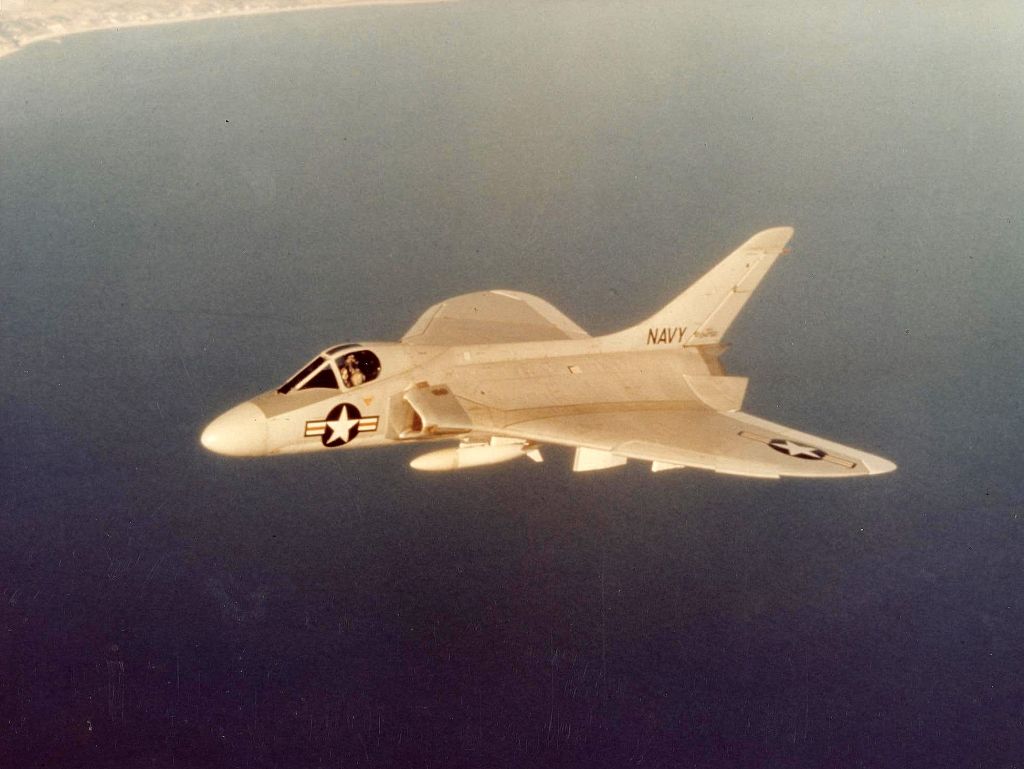
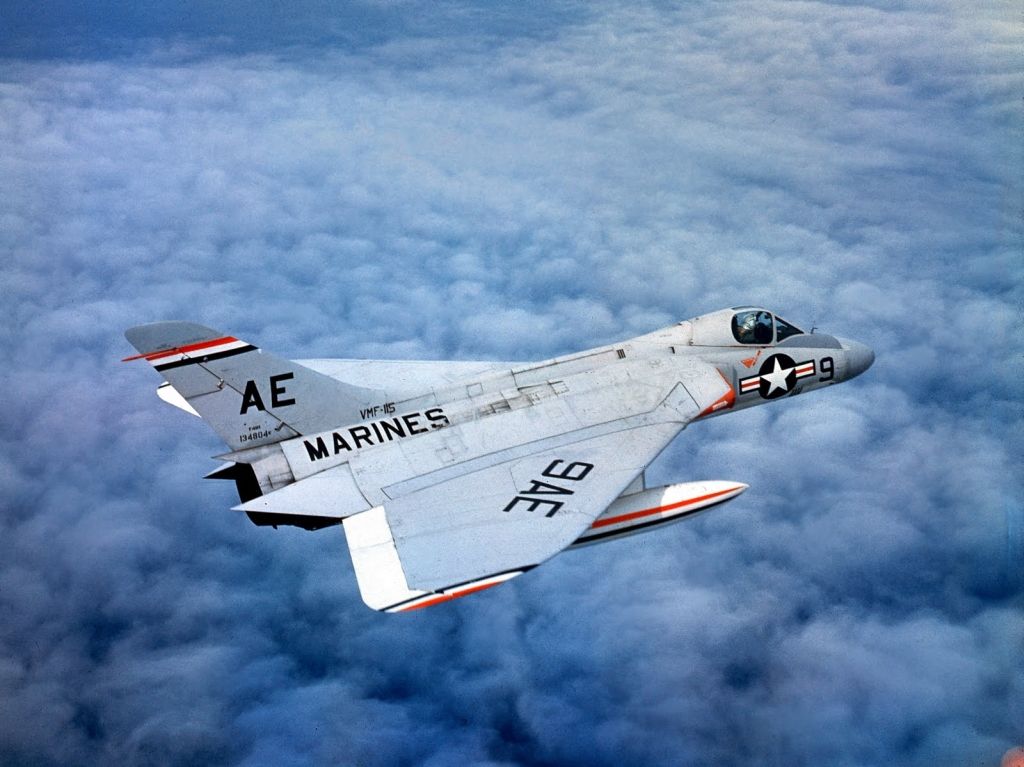
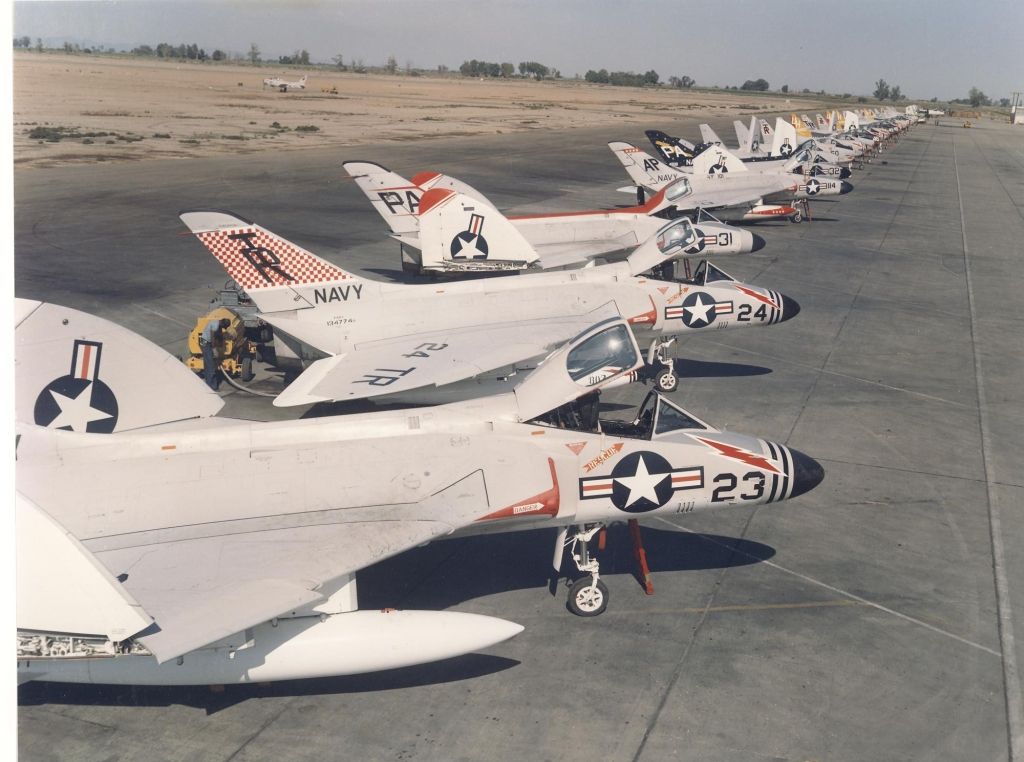
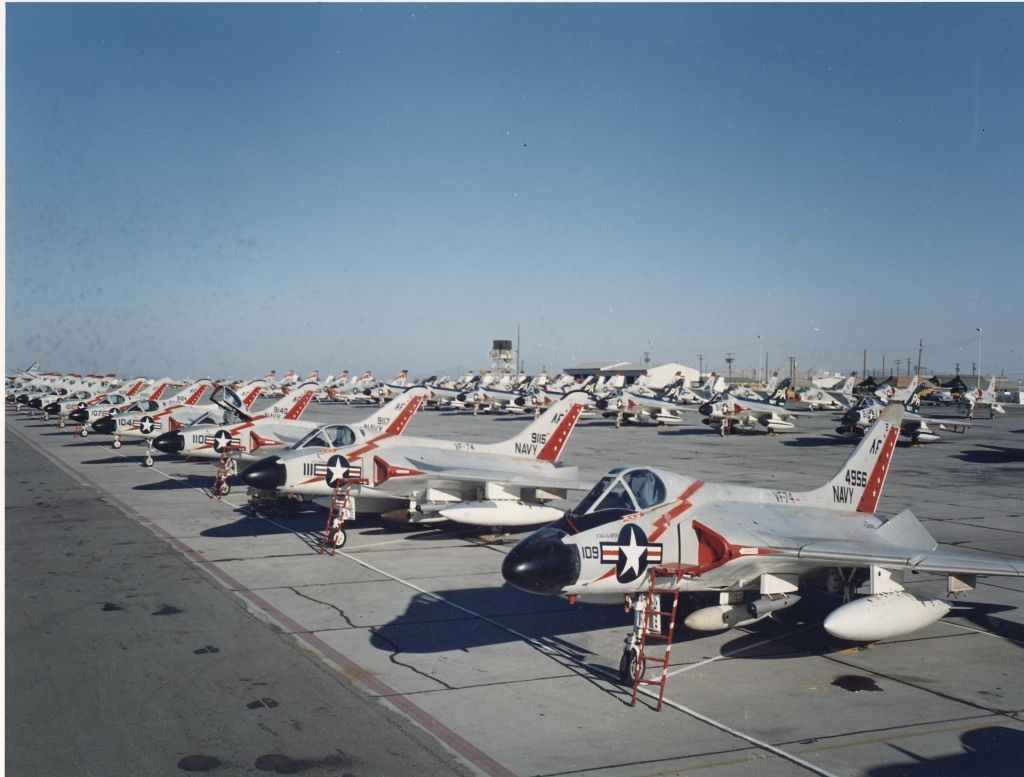
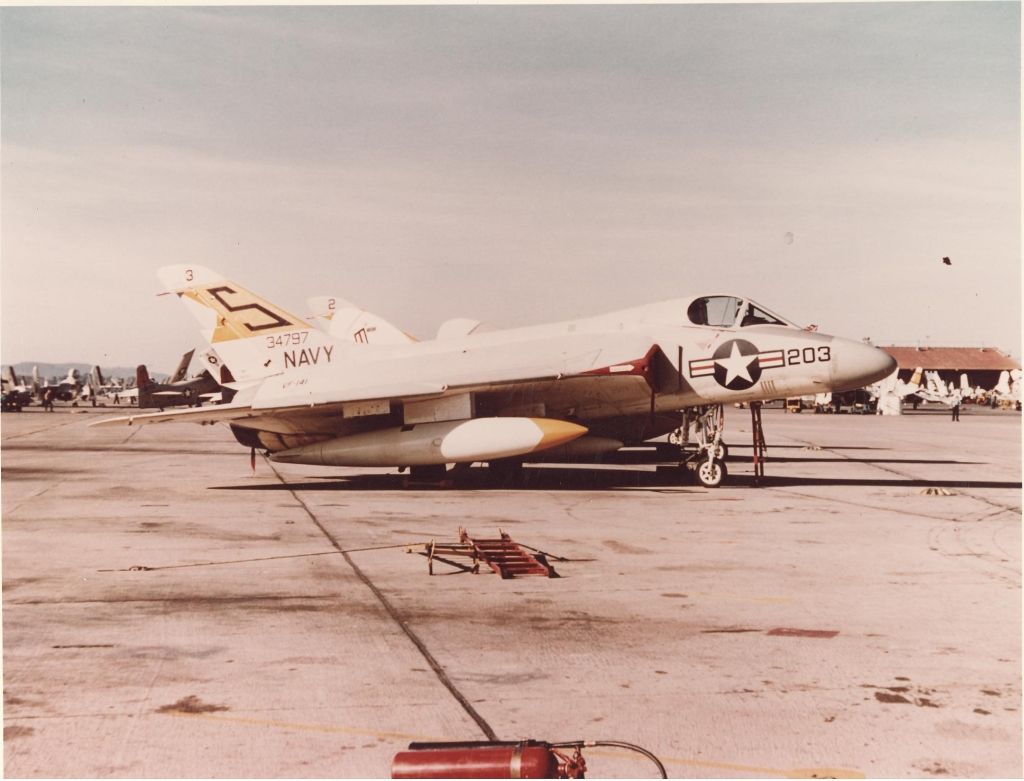
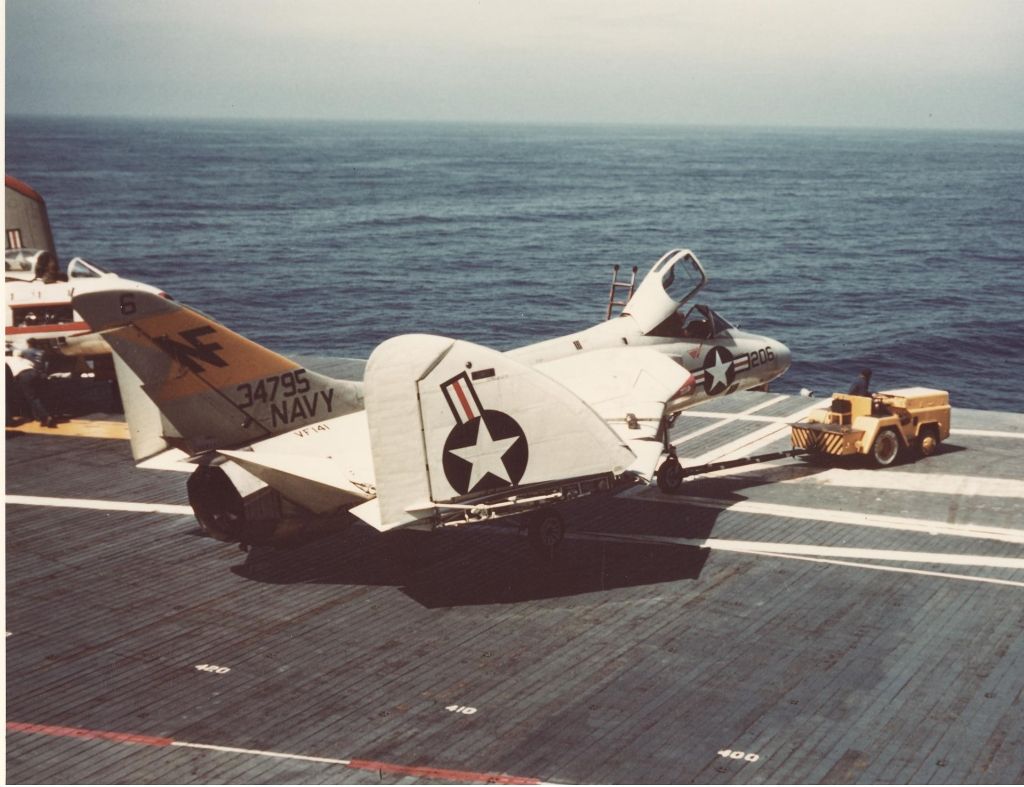
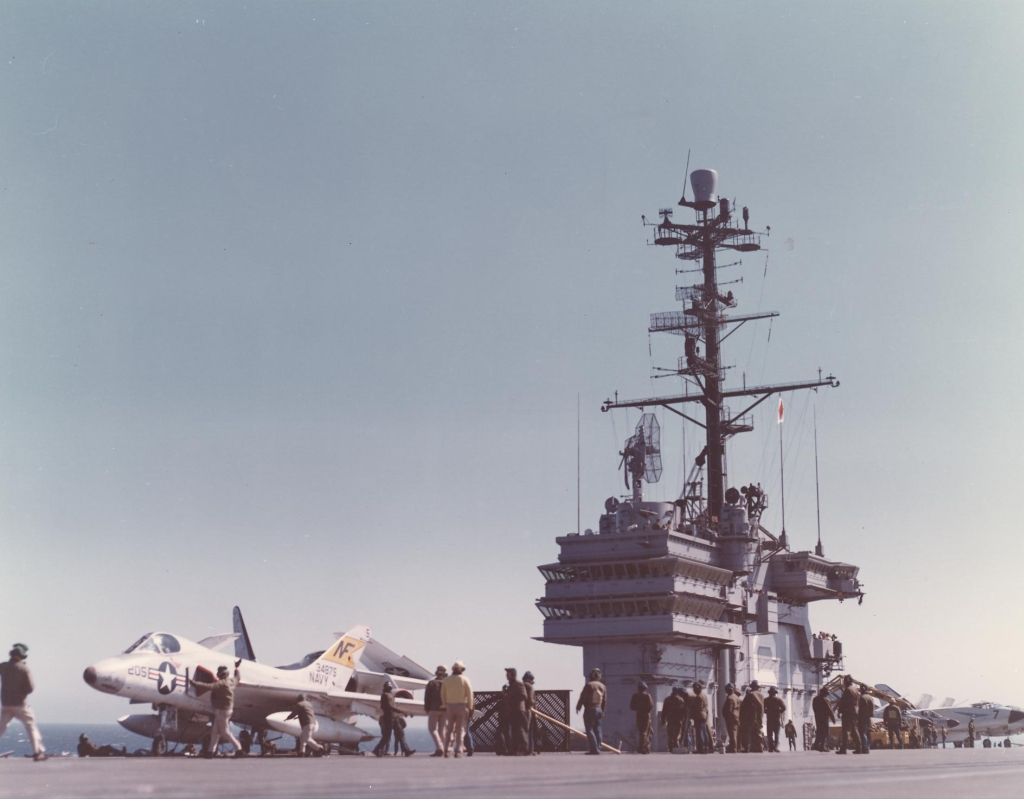
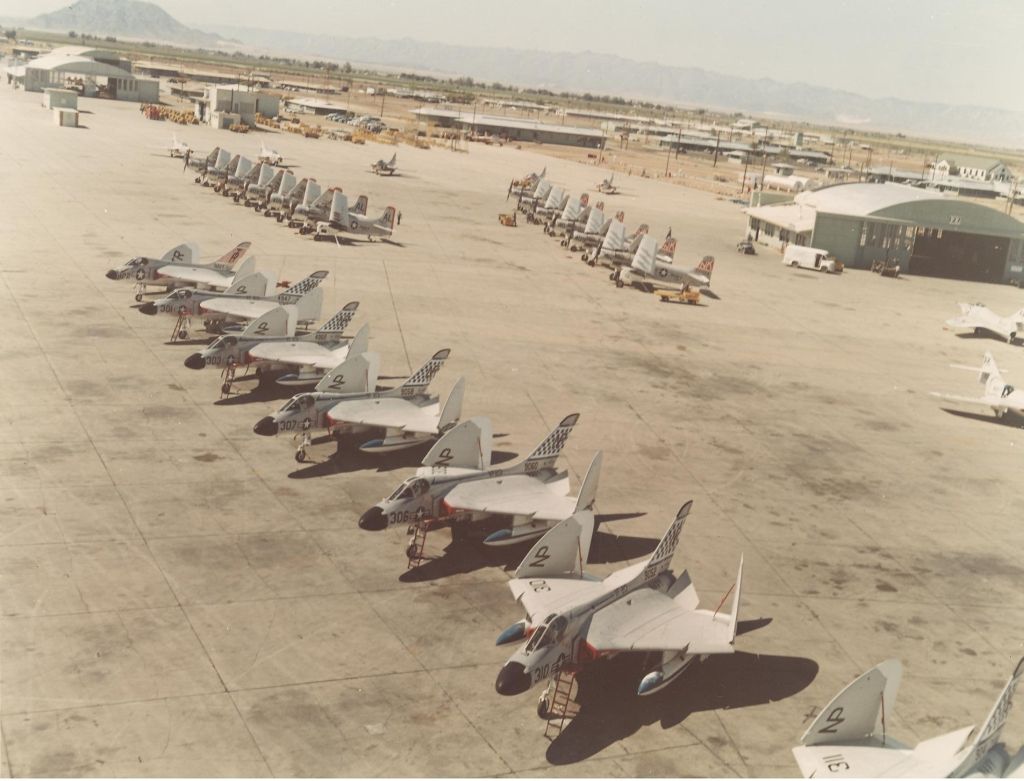
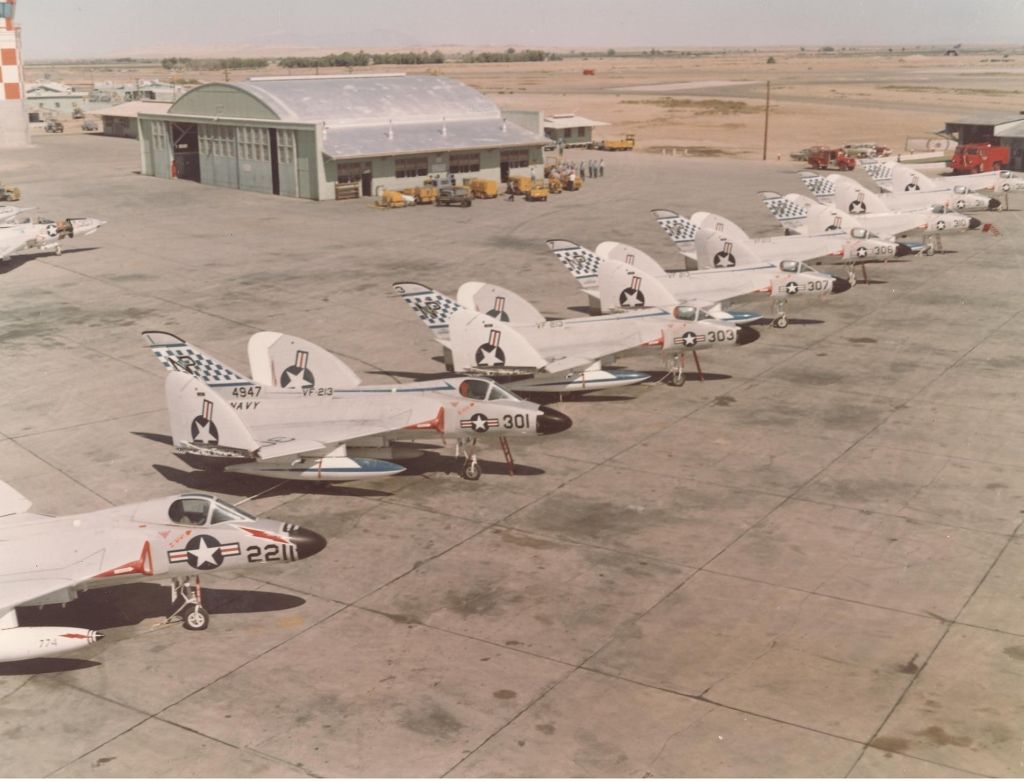
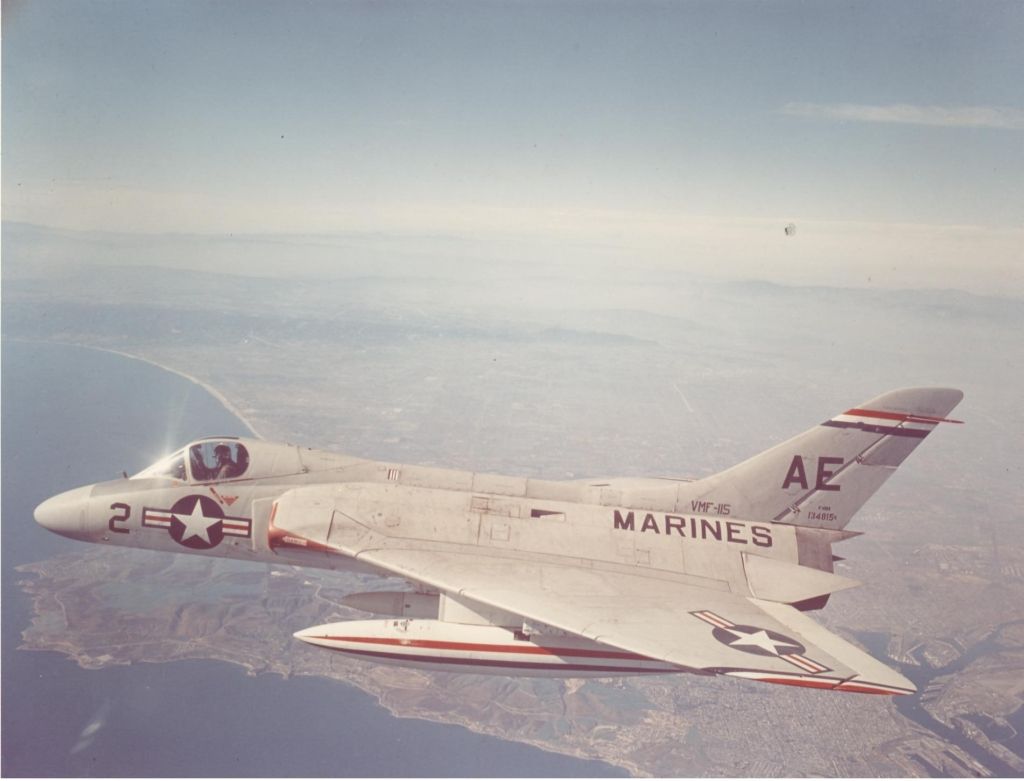
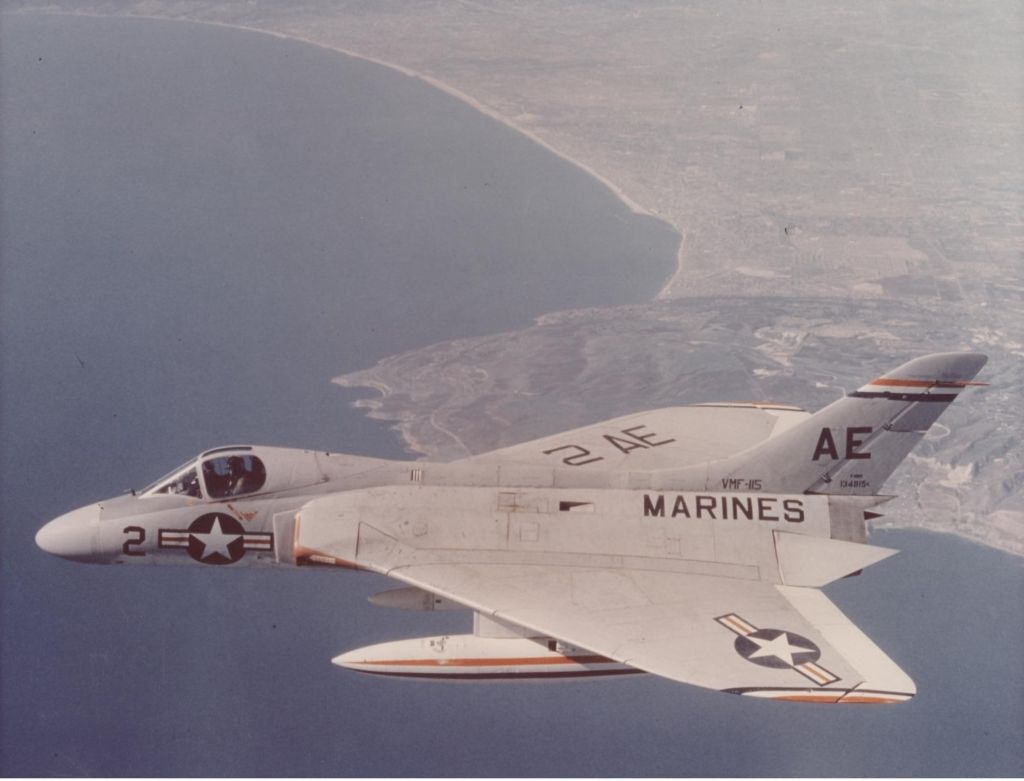
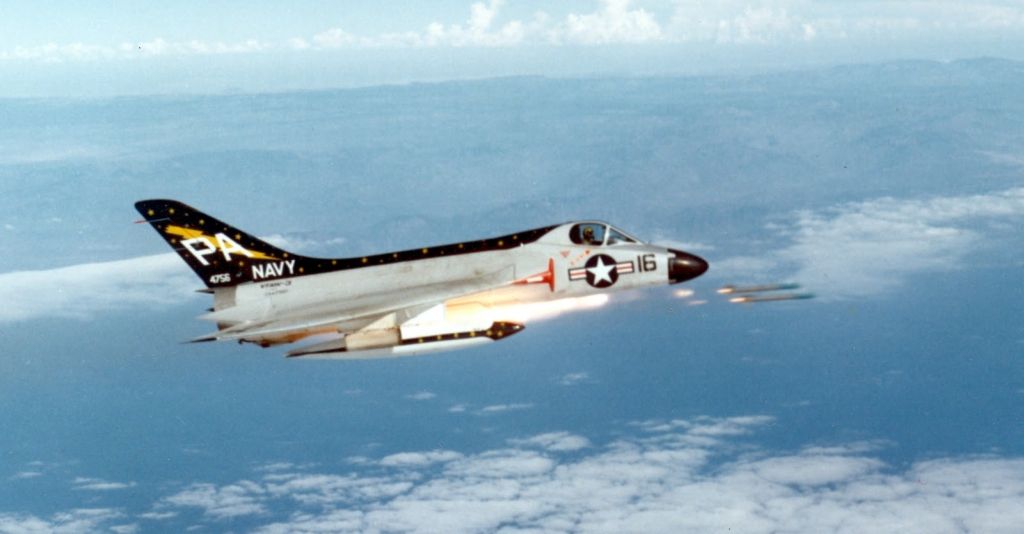
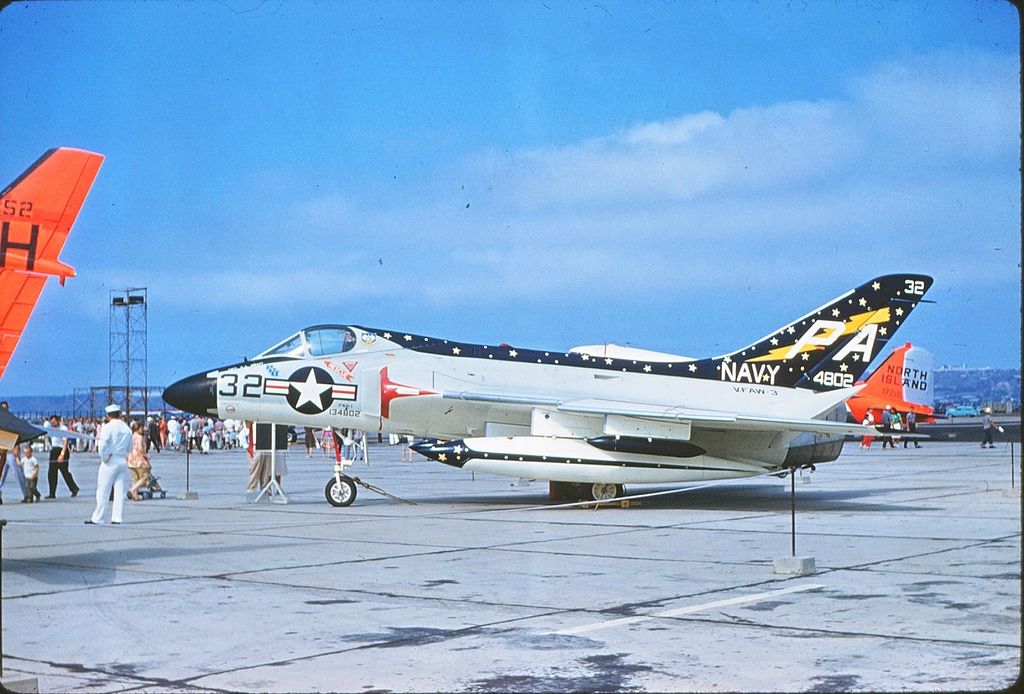
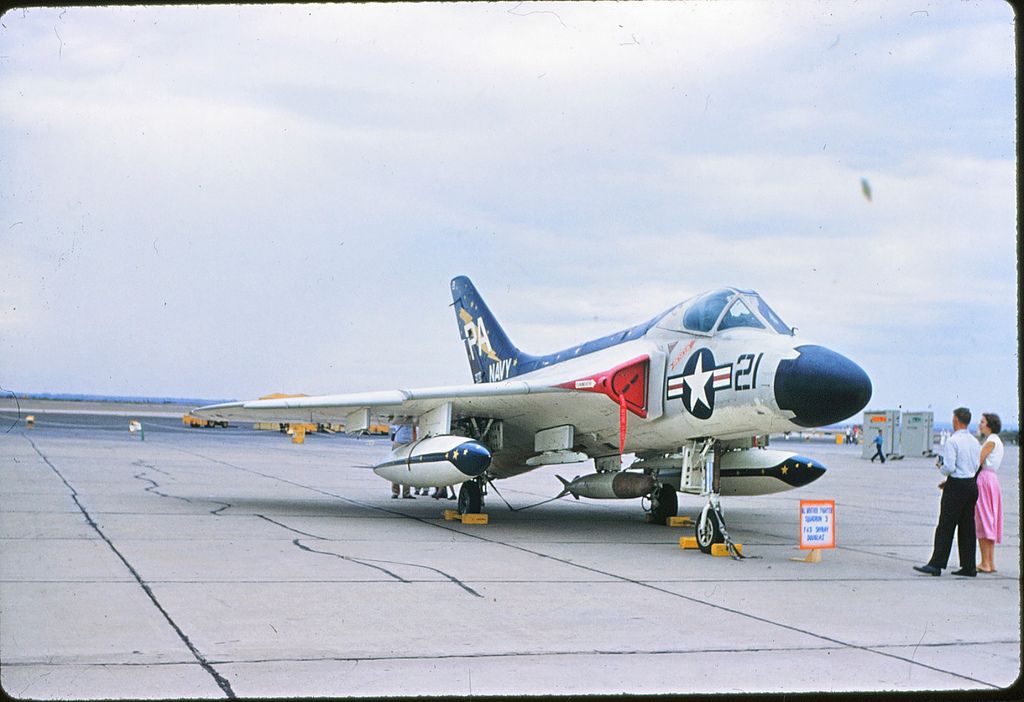
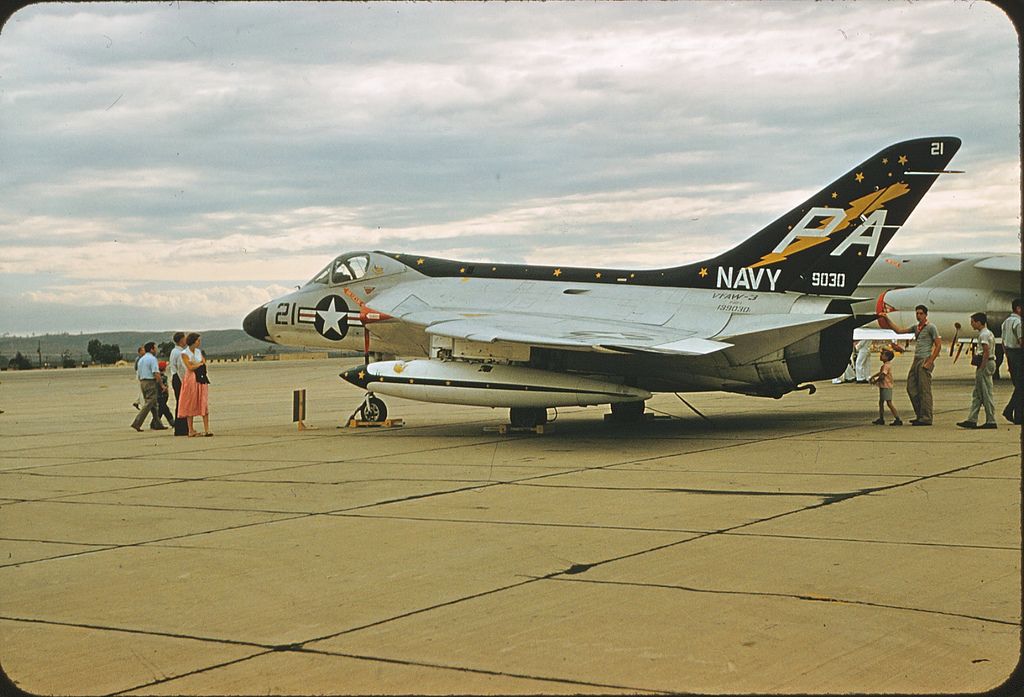

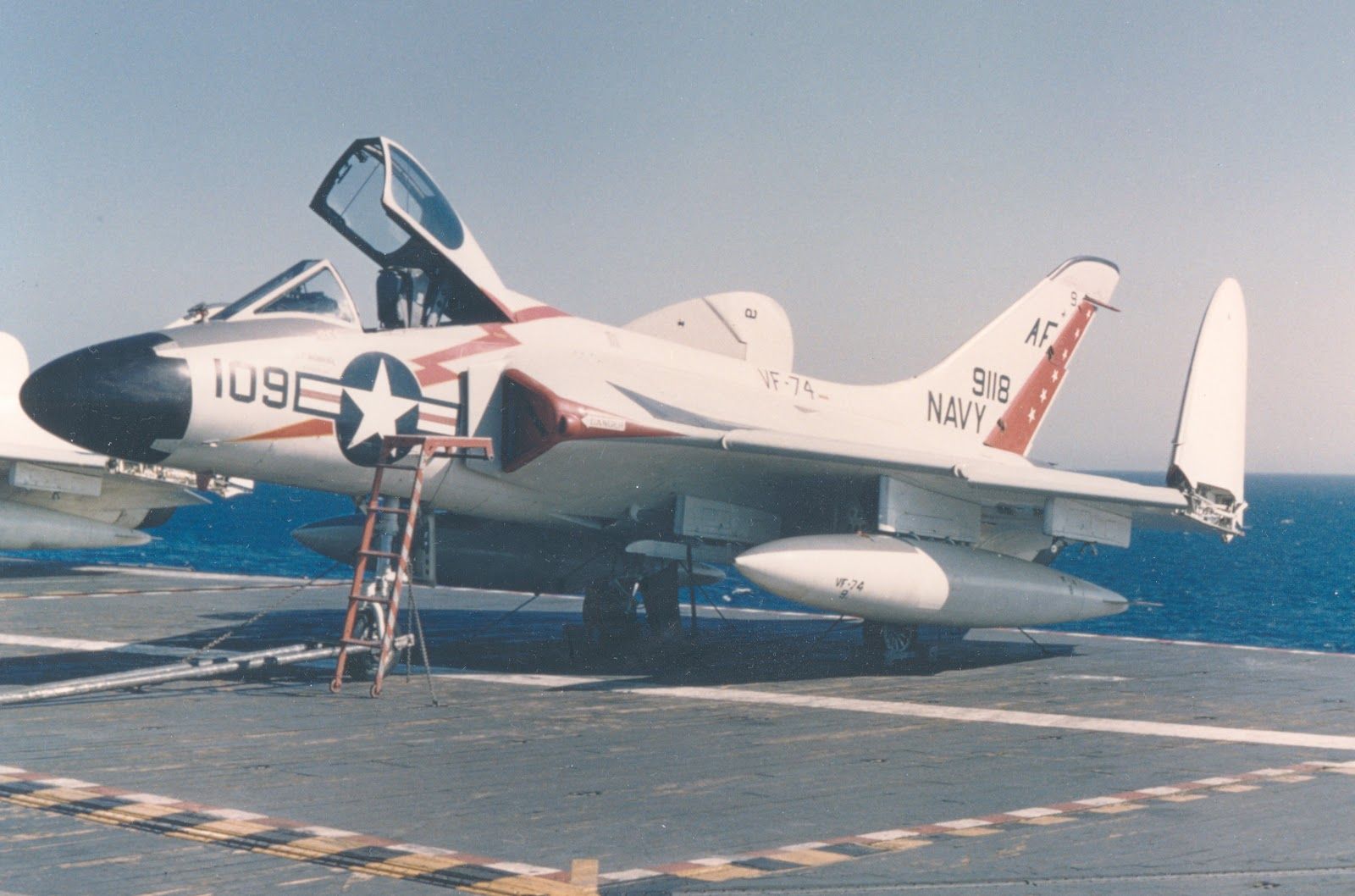
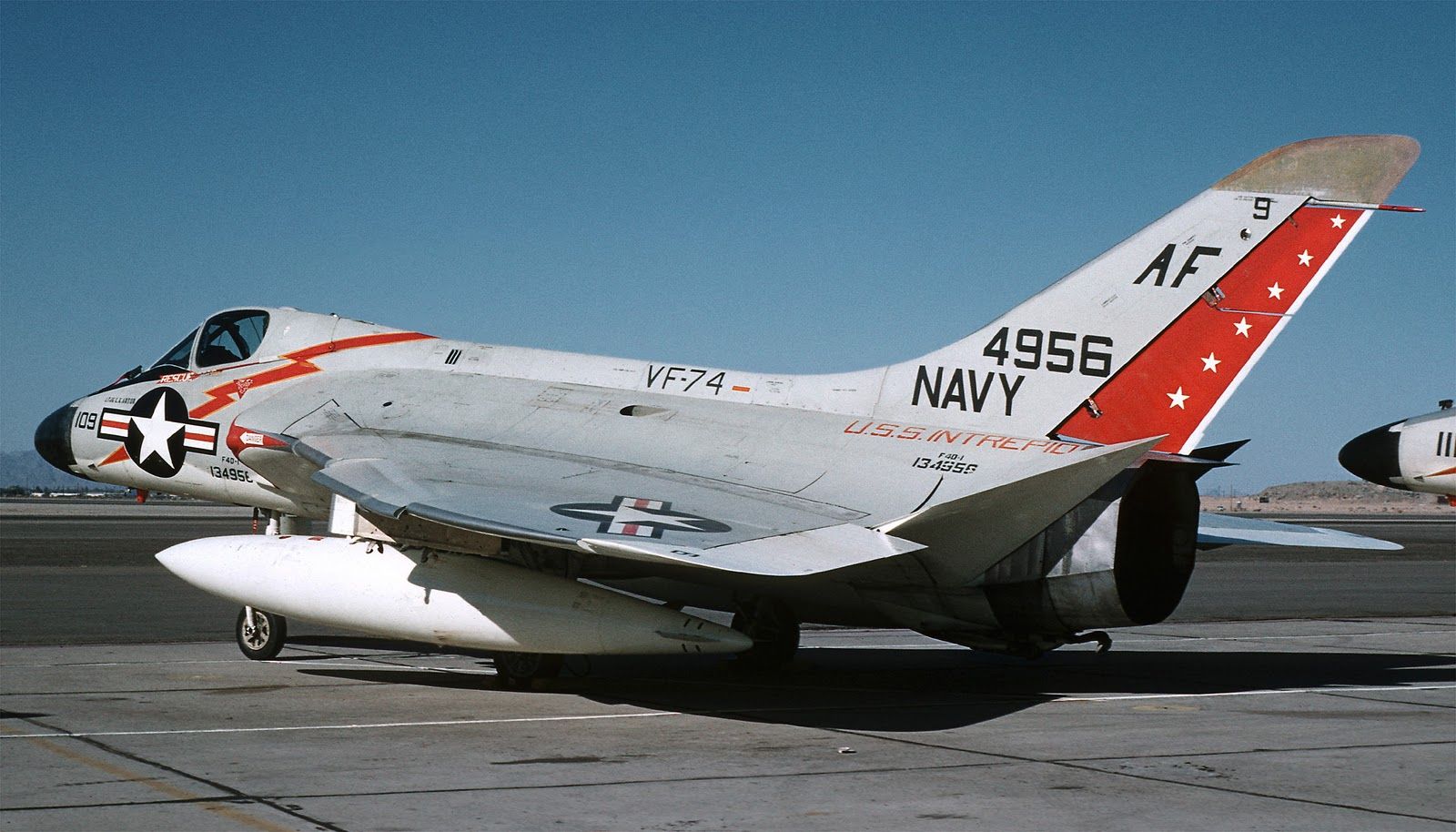
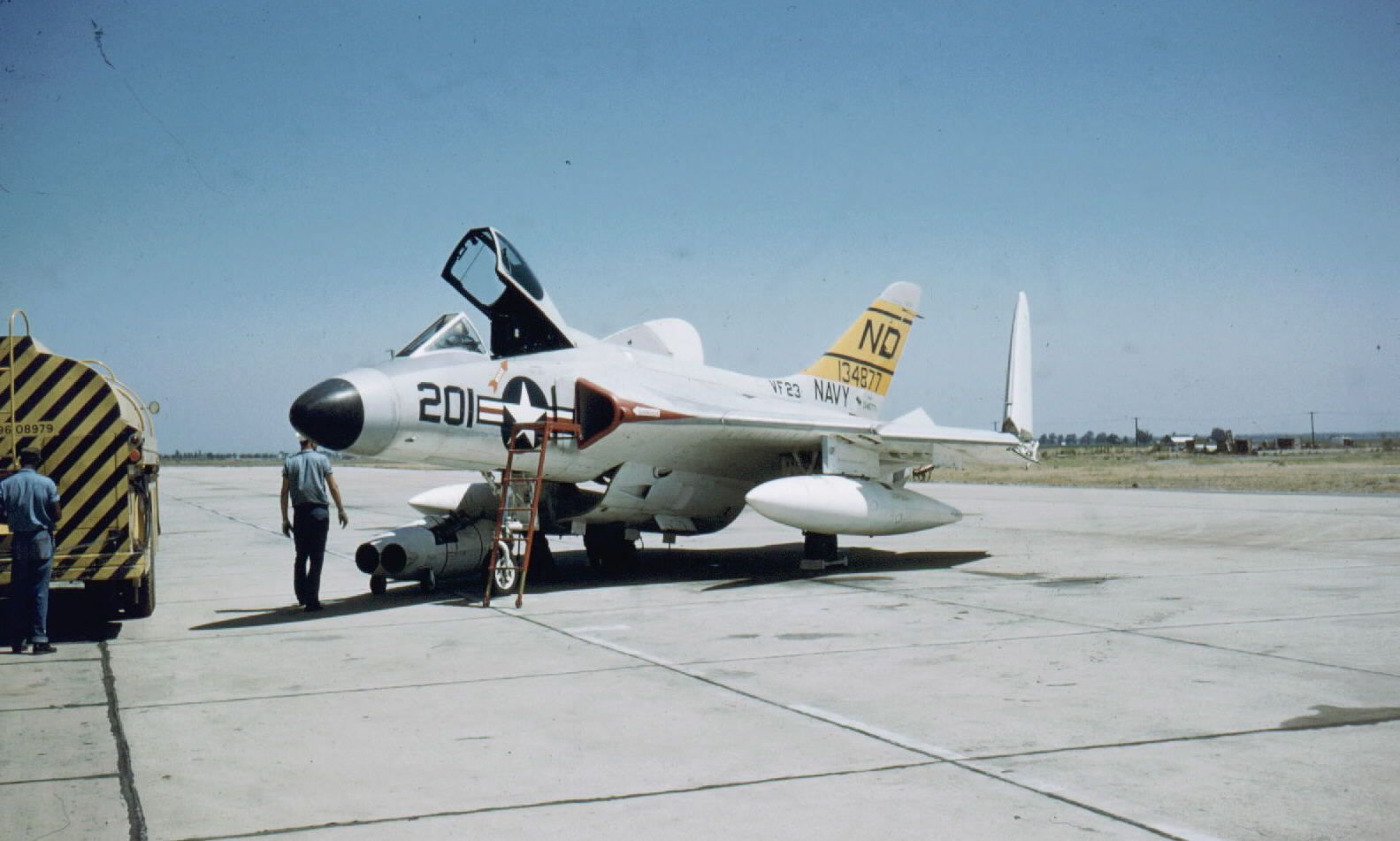
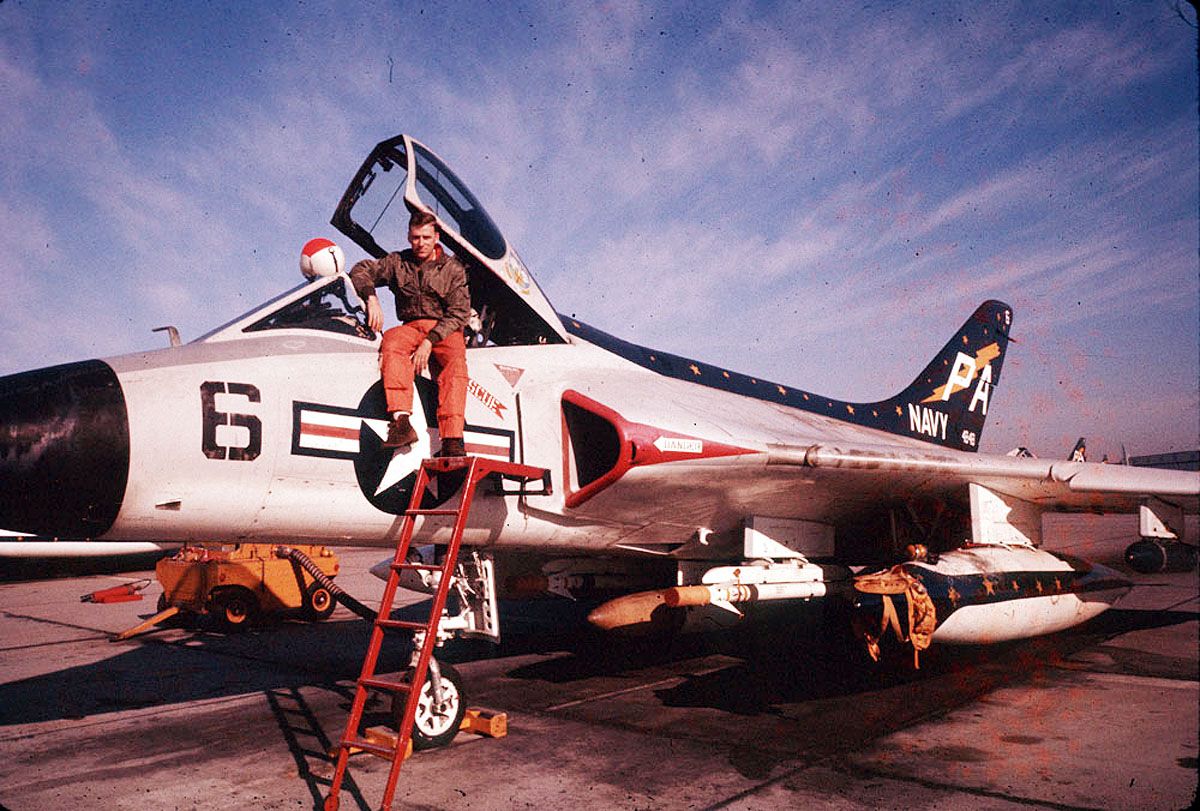
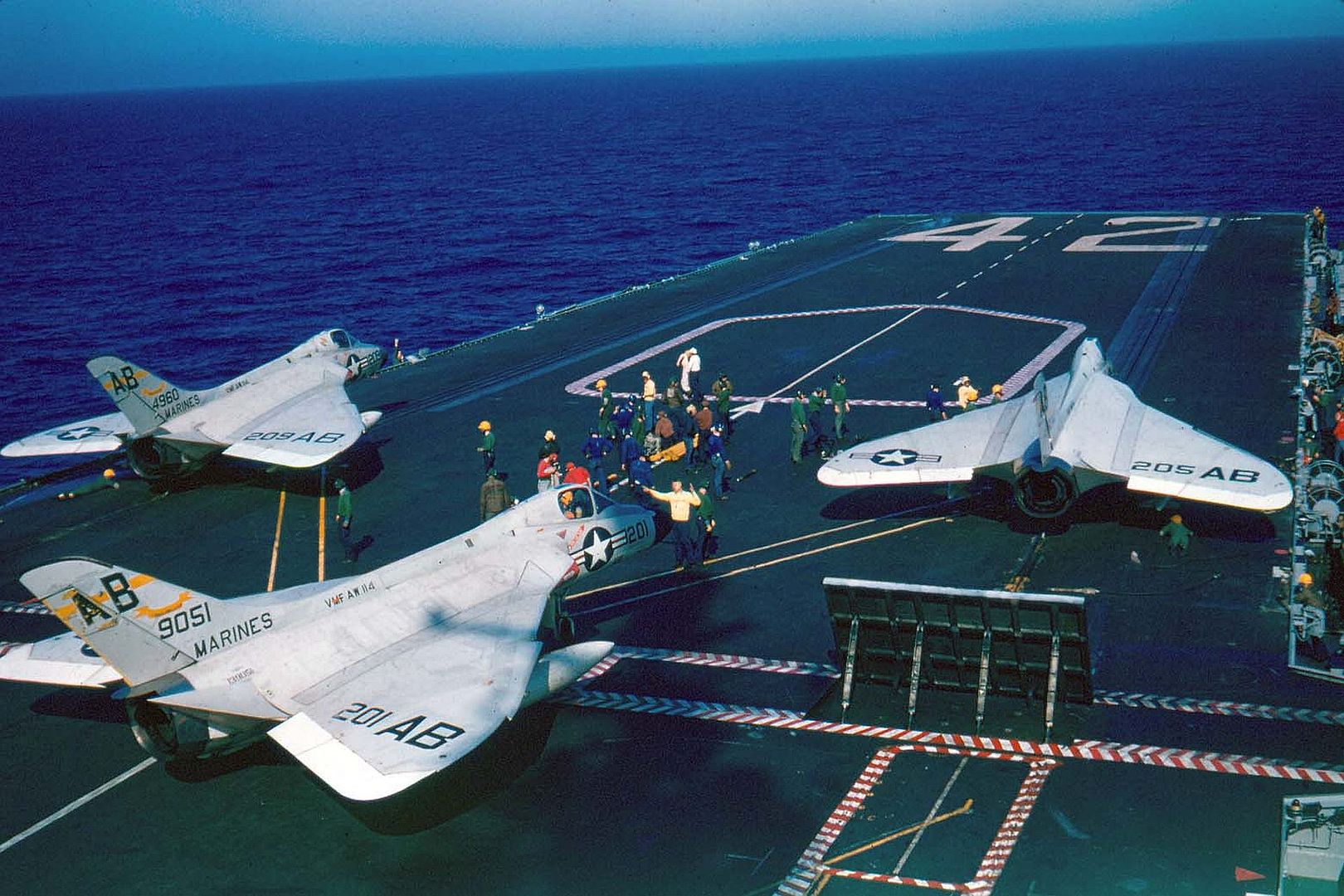
Regards Duggy -
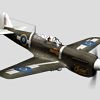 AdminThanks Duggy, great stuff as always. The Skyray was such a damn good looking aircraft.
AdminThanks Duggy, great stuff as always. The Skyray was such a damn good looking aircraft.
Post a reply
- Go to Previous topic
- Go to Next topic
- Go to Welcome
- Go to Introduce Yourself
- Go to General Discussion
- Go to Screenshots, Images and Videos
- Go to Off topic
- Go to Works in Progress
- Go to Skinning Tips / Tutorials
- Go to Skin Requests
- Go to IJAAF Library
- Go to Luftwaffe Library
- Go to RAF Library
- Go to USAAF / USN Library
- Go to Misc Library
- Go to The Ops Room
- Go to Made in Germany
- Go to Campaigns and Missions
- Go to Works in Progress
- Go to Juri's Air-Raid Shelter
- Go to Campaigns and Missions
- Go to Works in Progress
- Go to Skinpacks
- Go to External Projects Discussion
- Go to Books & Resources
